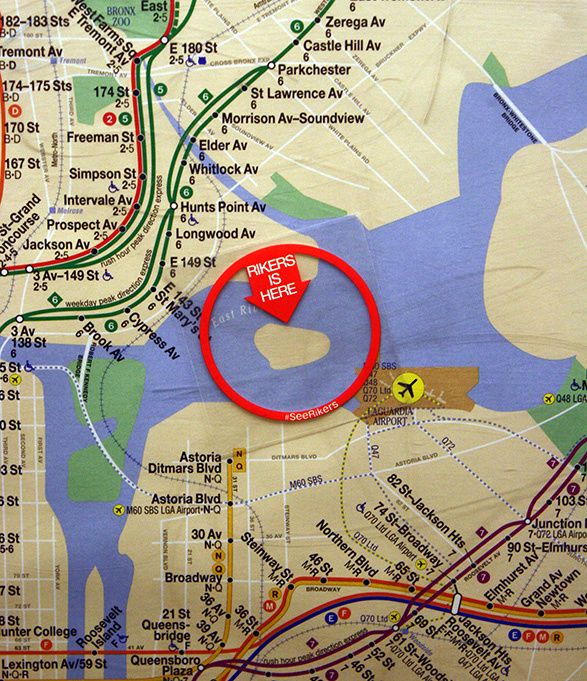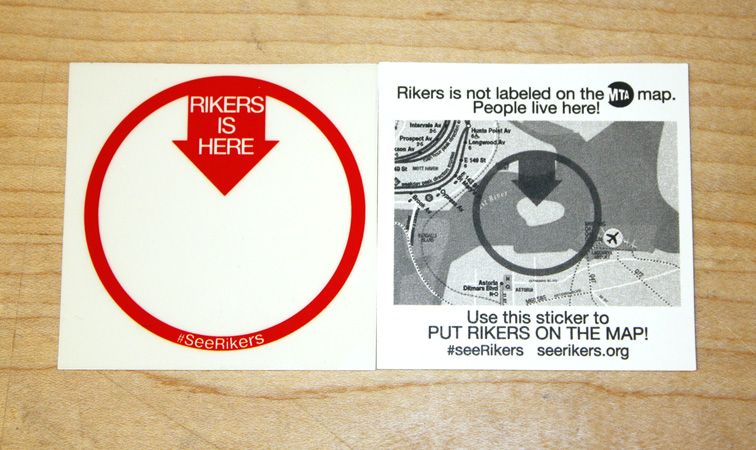Last-Minute NYC Holiday Gift Guide 🎁
We’ve created a holiday gift guide with presents for the intrepid New Yorker that should arrive just in time—



Al images courtesy #SeeRikers team
In 2013, after we spent some time working with the juvenile population inside Rikers Island jail, we published a piece about how the island kept disappearing and reappearing on MTA subway maps, depending on the version. We went all the way back to 1939 to show the inconsistencies and we also discussed the island’s ambiguous standing geographically and politically.
Yesterday, we were excited to hear about the guerrilla campaign #SeeRikers by graduate students in the Design Studies program at Parsons the New School for Design. The campaign uses clear stickers printed in red with “RIKERS IS HERE,” that can be placed on top of the maps in the subway. As the students, Estefanía Acosta de la Peña, Laura Sánchez, and Misha Volf explain, Rikers Island’s absence on the maps is “emblematic of a broader cultural willingness to overlook the places, policies, and practices that support the systemic violence of mass incarceration.”

The stickers build on the recognizable “You are here” iconography on maps. As the #SeeRikers team further elaborates:
Whereas the MTA’s label serves as an individual wayfinding tool, ours signals a collective void. The sticker invites a simple gesture, and yet to put it on the map is to make an explicit political action. With the adhesive artifact in hand, the passenger must publicly acknowledge and address the erasure.”

We were further pleased to hear that our article was actually an impetus for the project. “We are excited for the project to come full circle as your article was part of the inspiration for #SeeRikers!,” Laura Sanchez of #SeeRikers tells Untapped Cities.
You can pick up stickers at the New School exhibition “States of Incarceration” in the Sheila C. Johnson Design Center and the team will be handing them out at next week’s #CloseRikers rally at City Hall. The project is certainly timely, not only with the New School exhibition but also the advocacy of Just Leadership to shut down Rikers and de Blasio administration’s announcement last week that alternative sites are being considered for a deinstitutionalization of Rikers.
Next, see the history of Rikers Island on and off the maps since 1939 and read about our work with the juvenile population inside the Rikers Island prison.
Subscribe to our newsletter